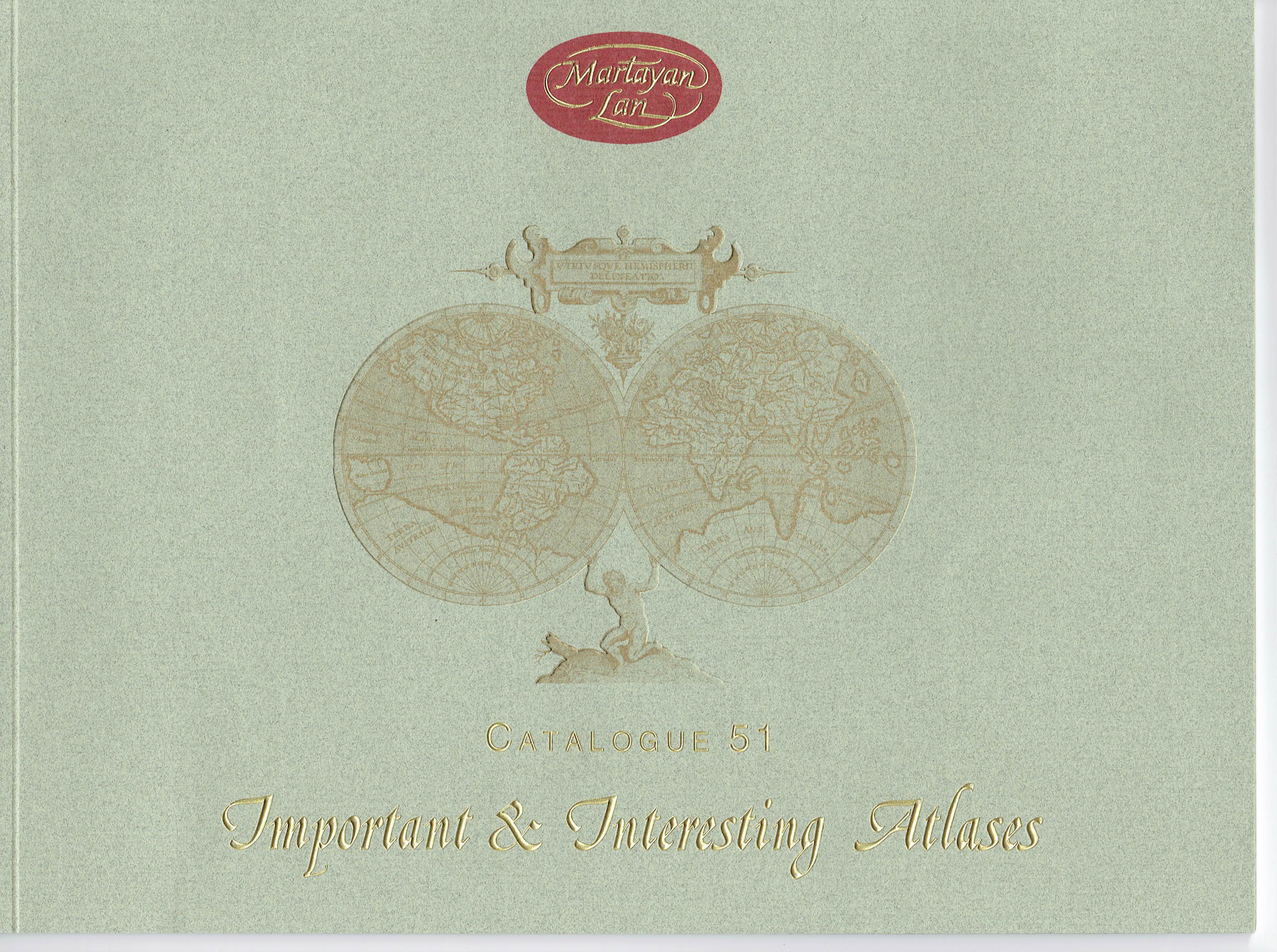Important and Interesting Atlases from Martayan Lan
- by Michael Stillman

Important and Interesting Atlases from Martayan Lan
Martayan Lan has issued Catalogue 51, Important and Interesting Atlases. These atlases range from the early 16th century to the middle of the 19th. They start with some of the first advances from the Ptolemaic world brought about by the earliest voyages of the Age of Discovery. The first glimpses of the Americas have just appeared. By the end of the catalogue, detailed presentations of that no longer new world are finally possible. Here are some examples of the atlases available.
We will start with one of the most important of atlases, as it represents the transition from the Ptolemaic view of the world to the modern one: Martin Waldseemuller’s Geographie Opus Novissima Traductione. It contains both Ptolemaic maps and new ones, with the most interesting being of the barely understood New World. One is a world map known as the “Admiral’s Map,” a reference Waldseemuller had made to it earlier, perhaps believing Columbus had created it. It also contains the first map of America to appear in an atlas. Interestingly, it labels the Americas as “Terra Incognita.” Waldseemuller had earlier christened the land “America” for its “discovery” by Amerigo Vespucci. Some have speculated the reversion represents Waldseemuller later learning that the land was discovered by Columbus, not Vespucci, though others believe this map was actually printed earlier. The map shows the northeast corner of South America, the Gulf of Mexico, and the islands of Cuba and Hispaniola. Florida is displayed reasonably accurately, which has led to speculation about an unknown voyage as it is not clear how Waldseemuller knew about Florida. Item 1. Priced at $825,000.
Item 10 is an exquisitely bound atlas of wall maps, with the title on the spine Dell’Hercole e Studio Geografico Di Gio Battista Nicolosi… It contains 14 folio maps with original outline color. This collection was bound by the Andreoli Bindery, which provided bindings for popes and royalty. This atlas was bound for Prince Giambattista Borghese, of the powerful Borghese family. The family was closely associated with the Vatican, including an earlier pope who generously took care of his relatives. The result was that Giambattista could afford to be a notable patron of the arts, music in particular. This atlas was bound for him in 1660. $24,000.
Item 13 is described by Martayan Lan as “the great atlas of the French Enlightenment.” It is generally considered the most important French atlas of the second half of the 18th century. It is dated 1757, though this one was likely assembled somewhat later as one map is dated 1758. This atlas was produced by Gilles and Didier Robert de Vaugondy. The Robert de Vaugondys were father and son, with father Gilles and son Didier serving as cartographers for King Louis XV. The title is Atlas Universal, which it is, containing 109 maps. Among those maps are eight of America, including North America, Canada, Virginia, Maryland, and the Caribbean. $25,000.
Item 19 is another atlas by a father and son team – Jedidiah and Sidney E. Morse. A New Universal Atlas of the World was an American atlas, published in 1822. It contains 20 maps in original color. The father, Jedidiah Morse, was a clergyman and teacher, who in the latter role considered the teaching of geography in America to be woefully inadequate. Prior to publishing his atlas, Morse wrote textbooks on geography, including works with another son, Richard C. Morse. It earned him the sobriquet “father of American geography,” though he is perhaps more notable for being the father of Samuel F. B. Morse, yet another son. Samuel was the inventor of the telegraph and its accompanying Morse Code, the start of an era of electronic communications that led to everything from crank telephones to this website. $1,500.
Martayan Lan may be reached at 212-308-0018 or info@martayanlan.com. Their website is www.martayanlan.com